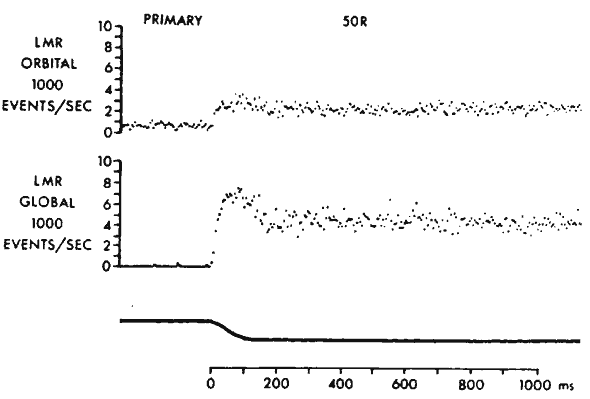

|
| Fig. 21. Electromyographic activity plotted against time during a 50-degree adducting saccade from primary position for the orbital and global layers of a human left medial rectus muscle. Global layer fibers develop an initial phasic pulse of activity to move the globe briskly against a viscous load, followed by a tonic step of activity to maintain the new globe position against the lesser static elastic load. Only a tonic step change in orbital layer activity is required for the mainly elastic load of the pulley suspensions. (Collins CC: The human oculomotor control system. In Lennerstrand G, Bach-y-Rita P [eds]: Basic Mechanisms of Ocular Motility and Their Clinical Implications, pp 145–180. New York: Pergamon, 1975.) |